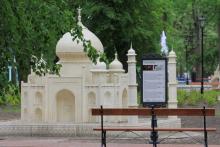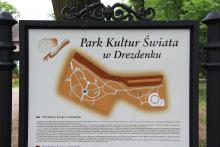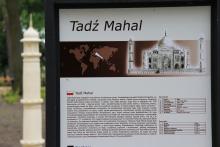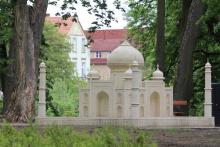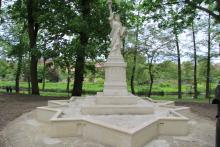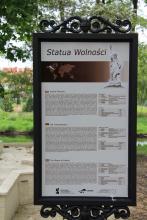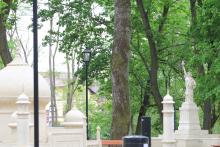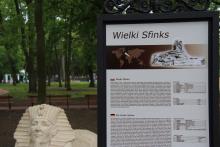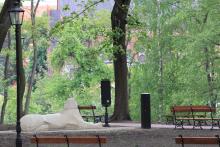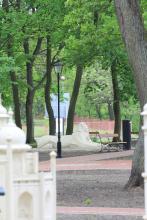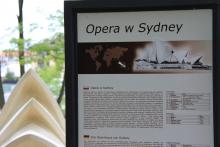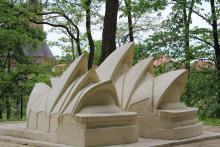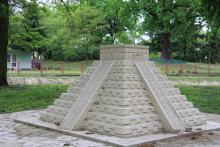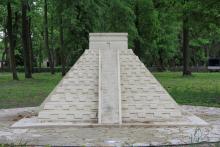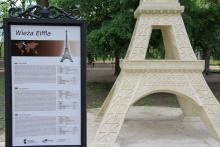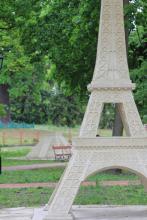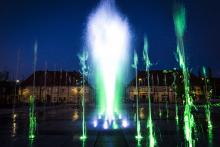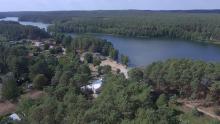Drezdenko
English
Drezdenko is a small town on the border of the Greater Poland and Pomeranian Lake District. Surrounded by forests, among lakes, it is situated on the Noteć River. The area of Drezdenko commune occupies the central part of the Gorzów Valley stretching across the Proglacial Valley. The town is located near the railroad line connecting Krzyż with Kostrzyn by the Odra, which enables a direct connection with Berlin. The proximity of the railway junction in Krzyż allows to get to almost all places in the country. The commune abounds in numerous monuments and tourist attractions.
There are three latitudinally situated strips of natural landscape in the Drezdenko commune. The dense forest area of the Drawsko Forest is located in the north. The Noteć River is surrounded by meadows and fields in the central part. The southern part is covered by forest, although it differs slightly from its northern neighbor. This is the Notecka Primeval Forest.
In each part there is a river, streams, lakes and ponds. In the midst of this landscape, an abundance of life is found in all aspects. There are many animals, including protected species, a great variety of birds and plants. In these "natural circumstances" it is possible to find villages and their people, who are friendly and kind. It is the people who for centuries have created the local cultural landscape, which in combination with nature creates a picturesque blend. This is what makes the land of Drezdenko so attractive.
There are plenty of places that you have to discover on your own, which can also give pleasure to many people. It is possible to wander here for hours through forests and meadows and not meet anyone, which is a rarity nowadays. It is very likely that sooner or later you will reach the shore of some water, where you can swim, float, and of course fish in it.
Tired of watching nature and fishing, the inquisitive can look at the cultural landscape. First, get into interpersonal contact with the locals. Secondly, look for traces of former inhabitants, as we are in an area where nationality changed after 1945. In several places in the commune you can find the remains of military objects which used to be the fortifications of the Pomeranian Positions and in the close vicinity of Drezdenko fragments of a blown up weir on the Noteć River. While collecting mushrooms in the forests, tourists can come across fragments of battle shelters, remains of anti-tank ditches and trenches. Their remains and traces can be found in both northern and southern parts of the municipality.
In the forests in the south, the most modern element of Drezdenko’s cultural, or rather industrial, landscape awaits mushroom pickers – an oil and gas mine located on the border between the villages of Grotów and Lubiatów.
The history of the city in a nutshell:
The first reference to Drezdenko comes from 1233.
In the 13th or 14th century, Drezdenko was probably granted Magdeburg Law and became a town in the full meaning of the word.
Already in 1605, Drezdenko gained a new function – it became a fortress.
After the completion of the Bydgoszcz Canal in 1774, the Noteć River became an element of the international navigation system. In the 18th century about two thousand barges and dugouts passed through Drezdenko every year.
A number of elegant Art Nouveau buildings are a trace of financial success of the 19th century inhabitants of the town.
As a result of border changes after the Second World War, Drezdenko again became part of the Polish state.
Park of World Culture
The park is located in the place of former Jordans Gardens. The park stretching over the Old Noteć River includes miniatures of famous buildings from all over the world: the Eiffel Tower, the Tadź Mahaj temple, the Sphinx of Giza, the American Statue of Liberty, the temple of Kukulkan in the Chitzen Itza complex and the Sydney Opera House. The limestone forms were created by the sculptor Michał Niedźwiedź from Rogoźno. Each object has appropriate information boards. There is a large playground for children and a climbing wall in the park. There is also a fountain.
Palace and Park Complex
The Palace and Park Complex is located at Wolności Square. The building with a baroque palace from 1766 is currently the seat of Junior High School No. 1 in Drezdenko. The whole complex of buildings of Junior High School No. 1 is situated within the Fortress built by the Brandenburgians at the turn of 16th and 17th centuries. The remains of fortress include parts of the moat, remnants of bastions, foundations of the garrison church, barracks and the armoury.
Franciszek Graś Museum of Drawsko and Notecka Forest
In the early years of the 17th century, a powerful fortress was built east of the city. Its founder was the Elector of Brandenburg Joachim Friedrich. The fortress was built according to the design of a Dutch engineer, Mikołaj de Kamp. It was a lowland type establishment, with a star-shaped outline, earth ramparts and bastions in the corners. The fortress performed its function until the middle of the 18th century.
The Granary is one of the oldest, and most probably (the basement) the oldest preserved building in Drezdenko. It is listed in the Register of Historical Monuments and is under strict protection.
Contact:
City Hall in Drezdenko
Park of World Cultures
Kopernika 5 Street
66-530 Drezdenko
Phone +48 95 762 29 58
The public task is co-financed from the funds received from the Marshal's Office of the Lubuskie Voivodeship



